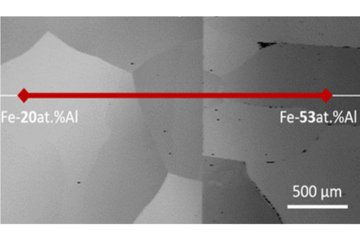All genres
221.
Talk
Probing deformation and fracture of materials with high spatial resolution. Euromat 2015 - Symposium on In-situ Micro- and Nano-mechanical, Characterization and Size Effects
, Warsaw, Poland (2015)
222.
Talk
Micro-scale fracture behavior of metallic glass thin films. 17th International Conference on the Strength of Materials (ICSMA 17), Brno, Czech Republic (2015)
223.
Talk
Analysis of the interface fracture resistance of multi-layered thin film structures under various service conditions. ESMC2015, Madrid, Spain (2015)
224.
Talk
Study of fatigue damage evolution in micron sized bending beams by in situ µLaue diffraction. ICM12, Karlsruhe, Germany (2015)
225.
Talk
Dislocation grain boundary interaction in bi-crystalline micro pillars studied by in situ SEM and in situ µLaue diffraction. ICM 12 - 12th International Conference on the Mechanical Behavior of Materials, Karlsruhe, Germany (2015)
226.
Talk
Fracture property characterization in brittle films and coatings. 42nd ICMCTF, San Diego, CA, USA (2015)
227.
Talk
Plastische Verformung an Korngrenzen: Neue Einblicke durch miniaturisierte Zug- und Druckversuche. 11. Tagung Gefüge und Bruch (2015), Leoben, Austria (2015)
228.
Talk
Insights into dislocation slip transfer by µLaue diffraction. Arbeitskreis-Treffen der Deutschen Gesellschaft für Materialkunde (DGM) e.V. „Rasterkraftmikroskopie und nanomechanische Methoden“, Darmstadt, Germany (2015)
229.
Talk
The mechanical behavior of thin cobalt films on polyimide. Arbeitskreistreffen Rasterkraftmikroskopie und nanomechanische Methoden, TU Darmstadt, Darmstadt, Germny (2015)
230.
Talk
Small scale mechanical testing of Cu structures at variable temperatures. TMS 2015, Orlando, USA (2015)
231.
Talk
Probing deformation and fracture of materials with high spatial resolution. EDSA 2015 – International Workshop on Stress Assisted Environmental Damage in Structural Materials, Chennai, India (2015)
232.
Talk
Are micro-fracture tests reliable? 2015 MRS Fall Meeting and Exhibit - Symposium T: Strength and Failure at the Micro and Nano-scale-From fundamentals to Applications
, Boston, MA, USA (2015)
233.
Talk
In situ micromechanics: An overview on µLaue based experiments to study GND accumulation in various loading geometries. International Symposium on Plasticity, Keynote lecture, Montego Bay, Jamaica (2015)
234.
Talk
“What can we learn from X-ray µLaue diffraction and where do we need to be careful?”. Seminar Talk at Helmholtz-Zentrum Geesthacht, Geesthacht, Germany (2014)
235.
Talk
Local diffraction techniques to probe residual strains/stresses in materials. Theorie and Practice of Modern X-Ray Diffraction, Summer School, Ellwangen, Germany (2014)
236.
Talk
In-situ stress measurements in thin films using synchrotron diffraction. Summer School: Theory and Practice of Modern Powder Diffraction, Tagungshaus Schönenberg, Ellwangen, Ellwangen, Germany (2014)
237.
Talk
In situ micromechanics: An overview on synchrotron based µLaue experiments. XTOP 2014, Villard de Lans, France (2014)
238.
Talk
New insights into the plasticity of micron sized objects by in situ µLaue diffraction. Lecture at Universität Münster, Münster, Germany (2014)
239.
Talk
Design and development of fracture property measurement techniques at the small scale. ICAMS (RUB), Bochum, Germany (2014)
240.
Talk
In-situ stress measurements in Cu films using synchrotron radiation. "Mechanical Issues for Flexible Electronics" Flex Workshop, Erich Schmid Institut, Leoben, Leoben, Austria (2014)











